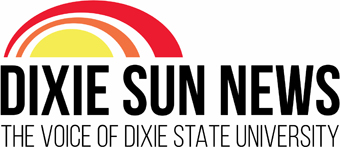The Utah Board of Regents approved tuition hikes earlier this month that boast of the lowest in the nation.
The current 2015-16 annual tuition amount for a Dixie State University student is $3,908. At a 5 percent, $195 increase for each student, the 2016-17 tuition amount approved by the board is $4,103.
DSU is within the top four universities that experienced the highest increase state-wide; however, its overall 2016-17 tuition amount also falls within the top three least expensive in the state, trailing Snow College and Salt Lake Community College.
Paul Morris, vice president of administrative services, said DSU is still a great value for its students.
“Our goal is to keep the tuition as low as we can,” Morris said.
With this increase, based off flat enrollment, DSU will profit $1.3 million in tuition for the upcoming year. The extra funds have already been allocated for faculty compensation, student services programs and faculty rank advancements.
The tuition increases determined by DSU administration begin with a list of needs. Morris said the university council, which is made up of about 40 administrators, assesses the list and determines which needs have the most priority and which will receive the extra funding.
“The needs always way outweigh the funding we have,” Morris said.
President Biff Williams said, because DSU is still a “baby institution,” it will be able to solicit more funding from the state legislature once its enrollment and academic programs grow.
“I can guarantee you that, if you ask any department on campus, every single department will say they’re underfunded,” Williams said. “There’s just never enough money.”
About $260,000 of the compensation increase was for faculty. DSU had the lowest rate of compensation in Utah for adjunct faculty two years ago, President Biff Williams said.
“We know, if the adjuncts aren’t happy, our students aren’t going to be happy, and they won’t get the education they want,” Williams said.
Morris said DSU implemented a four-year plan to increase adjunct faculty compensation, and this tuition increase is working toward achieving that goal. Budget Director Bryant Flake said the university has received a small amount of state funding for this effort, but tuition has been the primary funding source.
Six out the eight universities in the Utah System of Higher Education also allocated large portions of their tuition increases toward faculty compensation.
“When we hire a professor, it costs the us the same as it does other schools because we compete in a national market,” Morris said. “Our costs aren’t lower. We will lose our buying power to provide quality programs, and that’s not a sustainable model.”
When DSU administrators asses an allocation plan for the tuition increase, they always base their figures on flat enrollment, and they typically budget one year behind, Morris said.
If administrators overestimate enrollment, departmental budget cuts and depletion of reserve funds may occur if the university isn’t conservative enough, Flake said. Other universities in the state have made it a habit to cycle through laying off one year and hiring the next because they overestimated their growth, Morris said.
“We’ve always been about consistency and stability,” Morris said.
Flake said prioritizing the budget is both enjoyable and challenging.
“Since the identified needs invariably exceed available resources, it can be quite difficult to determine the top priorities that will actually be funded from the tuition increase,” Flake said.
